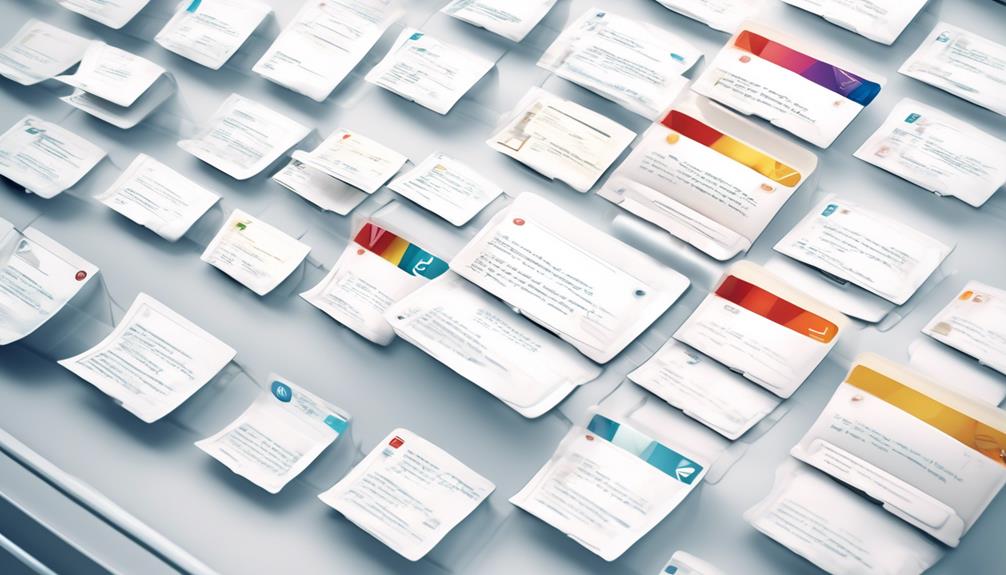Adding a P.S. to your email is akin to putting the finishing touch on an eloquently composed message – it has the potential to make a memorable impact.
However, getting the P.S. just right requires a thoughtful approach that considers the tone and purpose of your communication.
It’s a small addition, but it can pack a punch if used effectively.
So, how do we ensure that our P.S. resonates with the recipient and achieves its intended impact?
Well, let’s explore the art of crafting a compelling P.S. to enhance our email communication.
Key Takeaways
- P.S. in email emphasizes important details and captures attention.
- The placement of P.S. at the beginning or end of an email is ideal for a call to action or sense of urgency.
- Proper formatting and punctuation of P.S. should be followed for professionalism and readability.
- Utilizing P.S. in emails can create a sense of urgency, provide bonus information, reinforce key points, or capture attention and leave a lasting impression.
Understanding the Purpose of P.S. in Email
Understanding the purpose of the ‘P.S.’ in email is crucial for effectively capturing attention and conveying additional information.
The ‘P.S.’ or postscript comes at the end of a letter or email, and it serves as a powerful tool for emphasizing a specific point or adding important details that may have been overlooked in the main body of the message.
When writing an email, particularly for email marketing campaigns, incorporating a well-crafted ‘P.S.’ can be instrumental in capturing the reader’s attention and prompting them to take action.
Research has shown that people tend to notice what appears at the beginning and end of a text, making the ‘P.S.’ an ideal placement for a call to action or a sense of urgency.
In order to create an effective ‘P.S.’, it’s essential to keep it concise, relevant, and impactful.
Formatting and Punctuating P.S

To ensure proper formatting and punctuation of a P.S., it’s important to capitalize the letters ‘P’ and ‘S’ and omit any trailing punctuation for consistency and clarity.
When it comes to formatting and punctuating a P.S. in an email, there are a few key guidelines to follow:
- Use ‘P.S.’ in British English and ‘P.S.’ in American English, with the Chicago Manual of Style favoring ‘PS’ without periods.
- Capitalize ‘P’ and ‘S’ and leave out any trailing punctuation for the safest bet on formatting a PS.
- In electronic communication, the use of ‘P.S.’ is unnecessary due to the ability to edit before sending, but it can still be useful for effect and emphasis.
When using a P.S. in an email, it’s essential to adhere to these formatting and punctuating guidelines to ensure professionalism and readability. By following these conventions, your P.S. will appear polished and well-crafted, enhancing the overall impact of your message.
Using P.S. for Emphasis
When utilizing the P.S. for emphasis in email communication, it is crucial to understand the various ways it can capture attention and enhance the overall impact of the message. The use of P.S. can create a sense of urgency, add something extra, or reinforce a key point. Below is a table summarizing the different ways in which P.S. can be used for emphasis in email communication.
| Purpose | Example |
|---|---|
| Call to action | “P.S. Don’t miss out on our exclusive offer – it ends tomorrow!” |
| Bonus information | “P.S. Here’s an additional 10% discount code for your next purchase.” |
| Urgency | “P.S. Only a few items left in stock – order now to secure yours!” |
| Testimonial | “P.S. Read how our product has changed the lives of our satisfied customers here.” |
The term “P.S.” stands for “post scriptum” which comes from the Latin for “post postscript.” When using P.S. for emphasis, it’s important to keep the information concise and relevant to the main message. By strategically placing a P.S., you can draw attention to important details and leave a lasting impression on the recipient.
Practical Examples of P.S. in Emails

Discussing practical examples of using P.S. in emails enhances the effectiveness of communication and strengthens the impact of the message. When incorporating PS in emails, it’s crucial to ensure its relevance and impact. Here are some practical examples of how to use P.S. effectively:
- Creating Urgency: In email marketing, a P.S. can be used to create urgency by highlighting limited-time offers or deadlines.
- Reiterating Calls to Action: P.S. can be utilized to reinforce the primary call to action in the email, ensuring that it captures the reader’s attention.
- Providing Bonus Information: Email marketers can use P.S. to provide additional valuable information, such as bonus tips, exclusive content, or additional resources.
When using P.S. in emails, it’s important to make sure that it complements the main body of the email and adds value to the message. It should be concise and impactful, avoiding unnecessary repetition or information. Email marketers should also consider the placement of the P.S. within the email to ensure that it comes across as natural and relevant.
Leveraging the Power of P.S. in Email
Leveraging the power of P.S. in email can significantly enhance the impact and effectiveness of your communication. The P.S. can be a powerful tool when used strategically at the end of your email. It can serve various purposes, such as adding a personal touch, providing bonus information, or creating a sense of urgency.
When crafting your P.S., consider the main body of your email and use this final plea to reinforce a key point or call to action. Taking advantage of the P.S. allows you to capture the reader’s attention one last time before they close the email.
It’s important to keep the P.S. concise and relevant to avoid overwhelming the recipient with unnecessary details. By experimenting with different P.S. strategies and measuring their impact through email analytics, you can optimize the effectiveness of this important part of a letter.
Let’s know if you have any questions about leveraging the power of P.S. in email!
Frequently Asked Questions
What Can I Say Instead of PS in an Email?
We can replace ‘P.S.’ in an email with other phrases such as ‘In addition,’ ‘Also,’ ‘Furthermore,’ or ‘Additionally.’
These alternatives can help to maintain the flow of the email and convey additional information without the need for a separate postscript.
It’s important to choose a phrase that fits the tone and purpose of the email, ensuring that it seamlessly integrates with the content.
Is It PS or PSs?
It’s ‘P.S.’ in British English and ‘P.S.’ or ‘PS’ in American English.
The usage varies, but both are acceptable in electronic communication.
What Is an Example of a Postscript?
An example of a postscript could be:
‘P.S. I forgot to mention that the meeting has been rescheduled to 3:00 pm tomorrow.’
This is a common way to add an additional thought or message after the main body of a letter or email.
It’s a useful tool for providing important information that may have been overlooked or as a way to add a personal touch to the communication.
Should PS Be Indented?
We don’t indent the PS in emails. It should start on the same line as the rest of the message and be aligned with the left margin for a clean and professional appearance.
Indenting the PS can disrupt the flow and visual consistency of the email. Following standard formatting guidelines, we keep the PS in line with the rest of the content to maintain a polished look.
Conclusion
In conclusion, the power of a well-placed P.S. in an email can’t be overstated. It’s like the cherry on top of a delicious email sundae, grabbing the reader’s attention and leaving a lasting impression.
So, don’t underestimate the impact of a cleverly crafted P.S. – it could be the difference between your email being read or ignored. Try it out and see the results for yourself!









